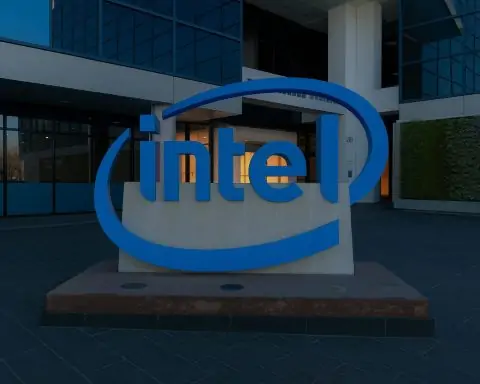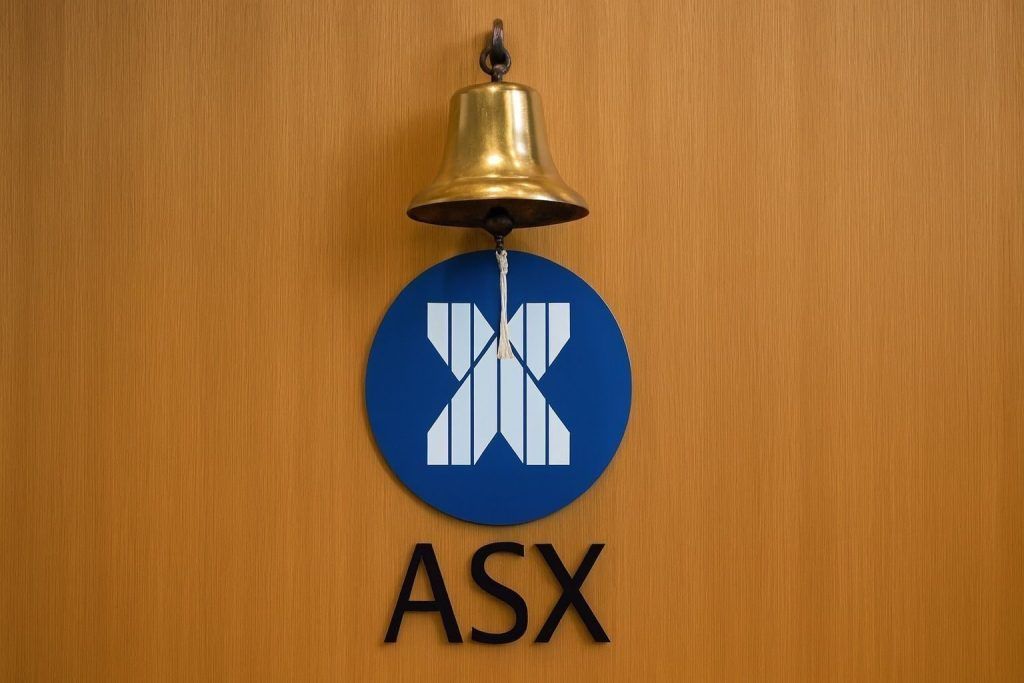As Tokyo investors gear up for Friday’s cash session on November 28, 2025, the backdrop is a potent mix of record‑level equities, a firmer yen, fresh economic data, and growing expectations that both the Federal Reserve and the Bank of Japan (BoJ) could move rates in December.
On Thursday, November 27, the Nikkei 225 jumped 1.23% to close at 50,167.10, reclaiming the psychologically important 50,000 line. The Topix added 0.39% to 3,368.57, helped by chip, AI‑linked and financial stocks. [1]
Here’s what you need to know before the Tokyo Stock Exchange opens on Friday.
Key Takeaways Before the November 28 Tokyo Open
- Nikkei back above 50,000: The Nikkei 225 finished Thursday at 50,167, supported by tech, AI‑related names, and financials, with breadth strongly positive across the Prime Market. [2]
- Yen hovering around ¥156 per dollar: USD/JPY traded near the mid‑156 level on Thursday, as traders priced in a high probability of a Fed rate cut in December and a possible BoJ hike later that month. [3]
- Mixed Japanese data: New releases late Thursday showed October unemployment falling to 2.5%, while industrial production slipped 0.5% month‑on‑month, suggesting tight labor conditions but softer factory output. [4]
- BoJ turning more hawkish: A Reuters exclusive reports the BoJ is actively preparing markets for a near‑term rate hike, with many economists now expecting a move as early as the December 18–19 meeting. [5]
- Corporate stories to watch: Asahi Group is dealing with the fallout from a major cyberattack and logistics disruption, while Toyota reported a 4% year‑on‑year rise in October global output, underlining export‑sector resilience. [6]
1. How Tokyo Traded on November 27
Nikkei 225 and Topix: Above 50,000 Again
- Nikkei 225:
- Close: 50,167.10
- Open: 49,868.79
- Intraday high: 50,322.14
- Gain: +1.23% day‑on‑day [7]
- Topix:
- Close: 3,368.57
- Gain: +0.39% [8]
Xinhua noted that the session was driven by semiconductor and AI‑related issues, which tracked an overnight rise in the Nasdaq and renewed optimism around AI‑linked earnings and demand. [9]
From a market‑structure perspective, the rally is part of a broader attempt to stabilize above 50,000 after a volatile October in which the Nikkei briefly traded in the 52,000‑yen range before correcting sharply on mounting worries about an “AI bubble.” [10]
Market Breadth and Sector Moves
Investing.com data show broad participation in Thursday’s gain: advancers outnumbered decliners 2,323 to 1,252 on the Tokyo Stock Exchange, with only a small pocket of names unchanged. [11]
- Leading sectors:
- Real estate, banking and textiles were cited as key outperformers. [12]
- Notable gainers on the Nikkei 225:
- Resonac Holdings surged about 8.9%, hitting a five‑year high.
- Toppan Printing climbed roughly 7.3%, reaching an all‑time high.
- Denka rose around 6.1%, touching a 52‑week high. [13]
These moves align with earlier commentary that the Nikkei’s rally has been heavily skewed toward AI and chip‑related heavyweights such as SoftBank, Advantest and Tokyo Electron, which contributed a disproportionate share of the index’s explosive run from 45,000 to above 52,000 in October. [14]
- Laggards:
- Healthcare names Eisai and Shionogi, and Mitsubishi Materials, were among the worst performers, each falling around 2–3%, hinting at some rotation out of defensives and materials into growth and cyclicals. [15]
Volatility and Risk Appetite
The Nikkei Volatility Index dropped more than 10% to around 33.3, underlining a risk‑on tone as traders leaned into the rally rather than hedging aggressively. [16]
2. Global Backdrop: Fed Cut Bets and a U.S. Holiday
Fed Rate‑Cut Hopes Keep Risk Sentiment Buoyant
Globally, equity markets have been riding a wave of optimism that the Federal Reserve will cut rates at its December meeting. Reuters reports that traders now price in around an 85% probability of a cut, up from roughly 30% a week earlier, after a string of softer U.S. data and dovish comments from Fed officials. [17]
This has supported:
- A continued global equity rally, particularly in tech and AI‑related stocks.
- A mild pullback in the U.S. dollar, helping the yen off its weakest levels. [18]
U.S. Markets Closed for Thanksgiving
Thursday’s session unfolded with Wall Street shut for Thanksgiving:
- The NYSE and Nasdaq were both closed on November 27, and will reopen Friday for a shortened session, with cash equities typically closing at 1 p.m. Eastern. NASDAQ Trader+3TS2 Tech+3The Economic Times+3
For Tokyo, that means:
- Thursday’s rally came against thin global liquidity, which can exaggerate moves.
- On Friday, any fresh cues from U.S. futures and early‑close trading will filter into Nikkei futures and currency markets, but the bulk of U.S. macro data (GDP revisions, durable goods, income and spending) will matter more for next week’s trade than for Friday’s cash open. [19]
3. Yen and the Bank of Japan: December in Focus
Yen Around Mid‑156 per Dollar
The yen continued to hover around the ¥156 per dollar mark on Thursday:
- Historical data show USD/JPY closing near 156.3 on November 27 after trading between roughly 155.7 and 156.4. [20]
- Investing.com quotes from the Tokyo session put USD/JPY near 156.1, modestly lower on the day. [21]
This level represents a slight appreciation from last week’s near‑158 highs, helped by both Fed‑cut expectations and growing speculation that the BoJ will respond to yen weakness with another rate hike. [22]
BoJ Signalling a Possible December Hike
An important narrative for Tokyo equities into year‑end is the BoJ’s changing tone:
- A Reuters exclusive reports that the BoJ is preparing markets for a possible rate hike as soon as December, after shifting its messaging to emphasize the inflationary risks of a weak yen. [23]
- A Reuters poll cited in the same piece shows a slim majority of economists expecting the BoJ to hike at its December 18–19 meeting, with most projecting the policy rate at 0.75% by March 2026. [24]
Inside the BoJ:
- Several board members have adopted a more hawkish tone, arguing that real interest rates need to rise given persistent inflation and improving wage prospects. [25]
- Governor Kazuo Ueda has indicated the bank will actively discuss the “feasibility and timing” of another hike in coming meetings, a shift away from earlier “no preset schedule” language. [26]
What it means for Friday’s open:
- A stronger yen tends to weigh on exporters but can support domestic demand stories by lowering import costs.
- The market is now juggling two rate narratives: Fed easing and BoJ tightening. For Japanese equities, the sweet spot is a scenario where global financial conditions ease while the BoJ hikes only gradually.
4. Fresh Japanese Data: Tight Labor Market, Softer Output
October Unemployment: 2.5% and Better Than Expected
Thursday evening’s data showed the October unemployment rate falling to 2.5%, beating a consensus forecast of 2.6%and down from 2.6% in September. [27]
- The reading reinforces the view of a tight labor market, even as growth has slowed.
- Tight employment, alongside decent wage gains, has been one reason the BoJ feels more comfortable talking about policy normalization. [28]
Industrial Production: -0.5% m/m
At the same time, preliminary October industrial production fell 0.5% month‑on‑month, reversing part of September’s strong 2.6% rebound. [29]
- The data confirm that factory activity remains choppy, reflecting weaker external demand and the lingering impact of tariffs on Japanese exports to the United States. [30]
PMI: Factories Still Contracting, Services Resilient
The latest S&P Global flash PMI survey paints a similar picture: [31]
- Manufacturing PMI: 48.8 in November (up from 48.2 in October) – still below 50, marking a fifth straight month of contraction, but with output at a four‑month high.
- Services PMI: 53.1, unchanged from October, signalling ongoing expansion in services.
- Composite PMI: 52.0 (up from 51.5), marking an eighth consecutive month of overall expansion.
Inflation pressures remain a concern, with input costs rising at their fastest pace in six months, even as output price inflation eased somewhat. [32]
Exports and Inflation: Support for a BoJ Hike
Recent hard data have strengthened the case for further BoJ tightening:
- Exports: October exports rose 3.6% year‑on‑year, beating a 1.1% forecast, helped by stronger shipments to Asia and the EU and a milder decline in U.S. demand. [33]
- Core CPI: Japan’s core consumer price index (excluding fresh food) rose 3.0% year‑on‑year in October, staying above the BoJ’s 2% target and slightly accelerating from September’s 2.9%. [34]
For equity investors, this mix — solid services and exports, soft factories, persistent inflation — supports the narrative of:
- A gradual BoJ hiking path, rather than an aggressive tightening cycle.
- Continued earnings support for exporters and service‑sector names, provided the yen’s appreciation remains moderate.
5. Corporate Stories to Watch: Asahi and Toyota
Asahi Group: Cyberattack Fallout and Earnings Delay
Asahi Group, the brewer behind Super Dry, remains in focus after it disclosed new details about a major September cyberattack: [35]
- The company aims to normalize logistics by February 2026, but warned that not all products will be available to ship by then.
- Asahi said personal data of about 1.52 million customers, plus more than 100,000 contacts and 275,000 employees and family members, may have been leaked, though none of the data has appeared online.
- The attack forced the suspension of order processing, shipping and call centers, and pushed October sales in key domestic units down 10–40% versus a year earlier.
- Asahi has delayed both its third‑quarter and full‑year earnings releases.
This backdrop helps explain reports that Asahi’s stock underperformed even as the broader market rallied on Thursday, and the name could remain under pressure into Friday’s session. [36]
Toyota: Strong U.S. Demand Offsets China Weakness
On a more positive note, Toyota Motor released upbeat October production and sales figures: [37]
- Global production: up 4% year‑on‑year to 926,987 vehicles, the fifth straight month of growth.
- Global sales: up 2% to 922,087 vehicles.
- United States: production surged 26%, marking a fifth consecutive month of double‑digit growth, driven by robust demand for hybrids.
- Japan: output rose 7%, but domestic sales fell 4%.
- China: production and sales slid 6% and 7%, respectively, after subsidy programmes ended in some regions.
The numbers reinforce Toyota’s positioning as a relative winner in the global auto cycle, particularly in hybrid vehicles — a theme that could continue to support Japan’s auto and auto‑parts complex into Friday’s trade.
6. AI and Tech: Bubble Fears vs. Earnings Reality
October’s explosive move that briefly pushed the Nikkei into the 52,000 range intensified debate about an “AI bubble”in Japanese equities: [38]
- News On Japan highlighted how a handful of AI‑linked heavyweights — notably SoftBank, Advantest and Tokyo Electron — accounted for a large chunk of the Nikkei’s multi‑thousand‑point surge from 45,000 to above 52,000, creating an “extremely skewed” market structure. [39]
- The subsequent correction brought the Nikkei back below 50,000 earlier in November, even as the broader Topixheld up better — a sign that the selling was concentrated in these AI‑exposed leaders. [40]
Thursday’s rebound above 50,000, coupled with renewed Fed‑cut hopes and robust tech earnings abroad, suggests that AI and semiconductor names remain the main engine of the rally, but also the main source of downside risk if sentiment turns. [41]
For Friday’s open, watch:
- Chip‑equipment makers and materials (Tokyo Electron, Advantest, Resonac, Denka).
- High‑beta tech and internet names (including SoftBank).
- The NT ratio (Nikkei vs. Topix) as a quick check on whether gains are broadening or remaining index‑heavy. [42]
7. Friday’s Key Events: Retail Data Before the Bell
Japan: October Retail & Wholesale Data at 8:50 JST
Just minutes before the cash session opens on November 28, investors will get fresh insight into domestic demand:
- The Ministry of Economy, Trade and Industry (METI) is scheduled to release the Preliminary Report on the Current Survey of Commerce for October at 8:50 a.m. Japan time on Friday. [43]
This report covers trends in retail and wholesale sales at department stores, chain stores, supermarkets and convenience stores, and will be closely watched for:
- How consumers are responding to higher prices and interest‑rate expectations.
- Whether retail sales are rebounding after a period of slower growth earlier this year. [44]
No Major New Japan Releases Later in the Day
Beyond that pre‑open report, Friday’s scheduled calendar is relatively light for Japan, with the focus shifting back to:
- Global data, particularly from North America and Europe. [45]
- Ongoing BoJ commentary and any leaks or hints ahead of the December policy meeting. [46]
8. What to Watch in the Tokyo Market on November 28
Pulling it all together, here are the main themes likely to shape trading at the open and through Friday’s session:
- Can the Nikkei hold above 50,000?
- A sustained close above this level would signal that the market is digesting AI‑bubble fears rather than buckling under them.
- A quick reversal back below 50,000 would suggest that recent gains may have run ahead of fundamentals. [47]
- Tech and AI‑linked names as bellwethers
- Watch chip makers, equipment suppliers, and major AI‑exposed conglomerates — they’ve been the primary drivers of both rallies and corrections. [48]
- Yen sensitivity across sectors
- Exporters (autos, machinery, electronics) typically benefit from a weaker yen; a move significantly below ¥155 could start to compress margins, while a move back toward ¥158 would re‑ignite intervention talk. [49]
- Domestic demand plays (retail, utilities, rail, real estate) tend to prefer a firmer yen that eases import‑cost pressures.
- BoJ expectations creeping into pricing
- As the market assigns higher odds to a December BoJ rate hike, rate‑sensitive sectors like banks, insurers and real estate will trade as proxies for the path of domestic yields. [50]
- Company‑specific stories
- Asahi Group may remain volatile as investors assess the medium‑term impact of the cyberattack.
- Toyota and other exporters could see support from strong U.S. demand, even as China‑related headwinds persist. [51]
Final Note
This outlook is based on information available as of November 27, 2025, including official data releases and reputable news sources. Market conditions can change quickly, especially around major macro events and central‑bank decisions. This article is for informational purposes only and should not be taken as financial or investment advice. Always consider your risk tolerance and, where appropriate, consult a qualified professional before making investment decisions.
References
1. english.news.cn, 2. english.news.cn, 3. m.investing.com, 4. www.investing.com, 5. www.reuters.com, 6. www.reuters.com, 7. www.investing.com, 8. english.news.cn, 9. english.news.cn, 10. newsonjapan.com, 11. m.investing.com, 12. m.investing.com, 13. m.investing.com, 14. newsonjapan.com, 15. m.investing.com, 16. m.investing.com, 17. www.reuters.com, 18. www.reuters.com, 19. www.scotiabank.com, 20. www.myfxbook.com, 21. m.investing.com, 22. www.fastbull.com, 23. www.reuters.com, 24. www.reuters.com, 25. www.reuters.com, 26. www.reuters.com, 27. www.investing.com, 28. www.reuters.com, 29. www.investing.com, 30. www.reuters.com, 31. www.reuters.com, 32. www.reuters.com, 33. www.reuters.com, 34. www.reuters.com, 35. www.reuters.com, 36. timesofindia.indiatimes.com, 37. www.reuters.com, 38. newsonjapan.com, 39. newsonjapan.com, 40. newsonjapan.com, 41. english.news.cn, 42. newsonjapan.com, 43. www.meti.go.jp, 44. tradingeconomics.com, 45. www.scotiabank.com, 46. www.reuters.com, 47. indexes.nikkei.co.jp, 48. english.news.cn, 49. www.myfxbook.com, 50. www.reuters.com, 51. www.reuters.com








